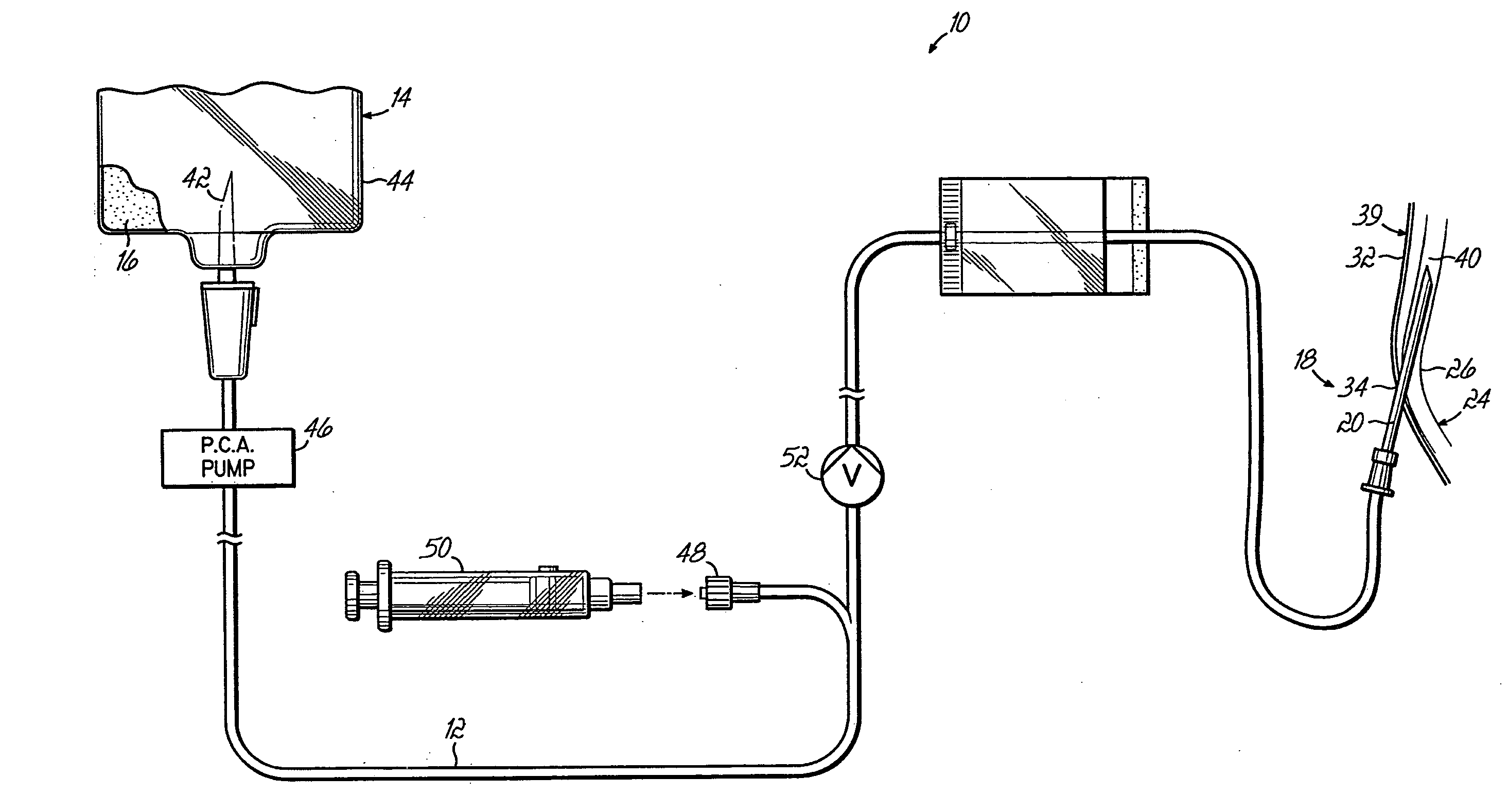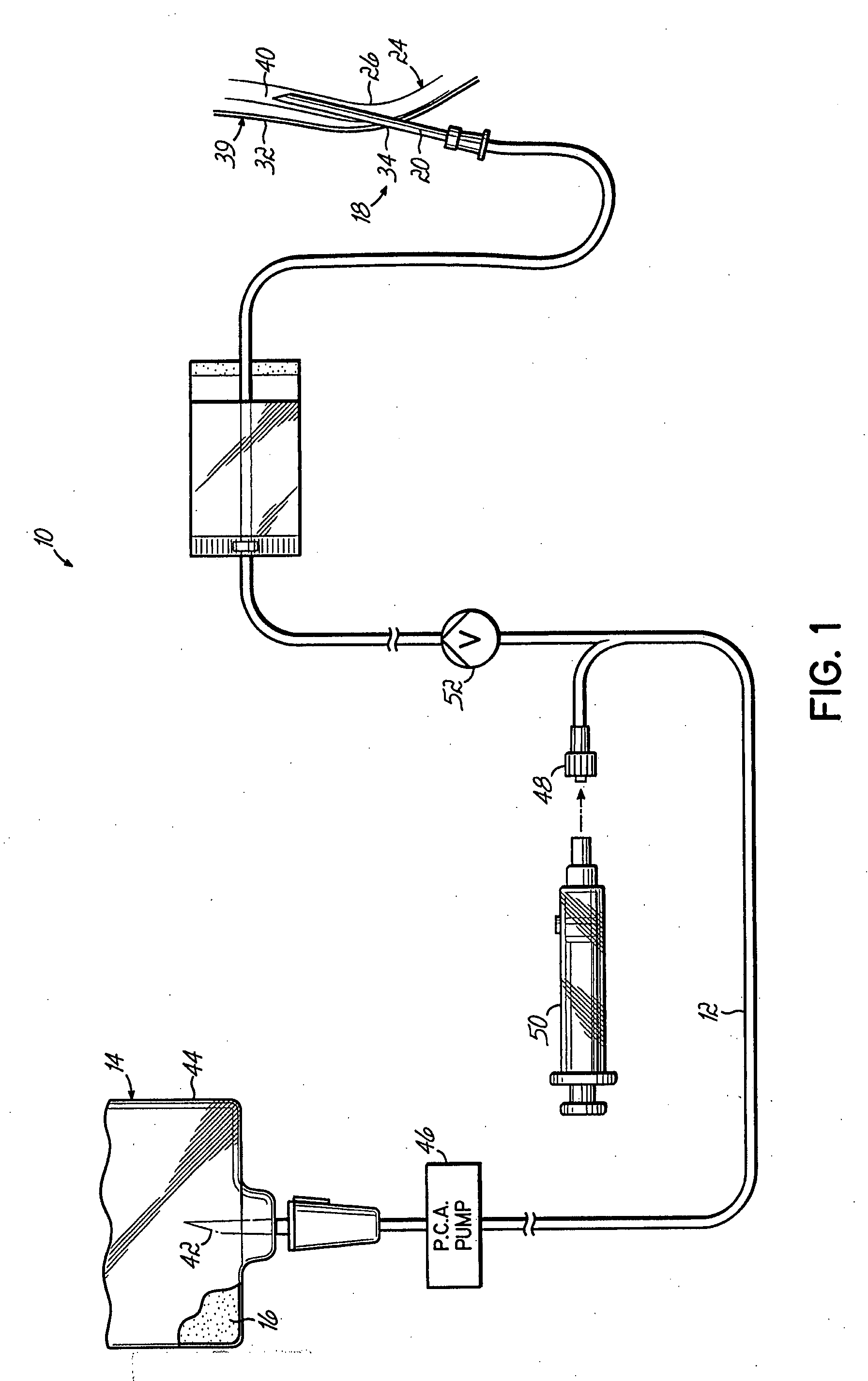Central Nervous System Administration of Medications by Means of Pelvic Venous Catheterization and Reversal of Batson's Plexus
a central nervous system and pelvis vein technology, applied in the direction of catheters, nervous disorders, drug compositions, etc., can solve the problems of inability to administer oral medications, inability to perform gastrointestinal problems, invasive parenteral administration, etc., to avoid more expensive injection procedures requiring skilled professionals, avoid side effects such as nausea and vomiting, and reduce pain
- Summary
- Abstract
- Description
- Claims
- Application Information
AI Technical Summary
Benefits of technology
Problems solved by technology
Method used
Image
Examples
Embodiment Construction
[0034]FIG. 1 is a schematic view of one embodiment of the infusor system 10 of the present invention. The infusor system 10 includes a medication delivery tube 12 which is coupled to a supply of medication 14 to be dispensed therethrough. The tube 12 may be made of PVC material or of a biodegradable material for more environmentally safe disposal. The delivery tube 12 is coupled to a delivery component 18 for dispensing medication 16 delivered thereto by the tube 12. Such a delivery component 18 may include, but is not limited to, a venous needle 20 or an indwelling venous catheter 22. As discussed further hereinbelow, the delivery component 18, such as the venous needle 20 or indwelling venous catheter 22, is operable to direct medication 16 from the tube 12 to a venous system 24 of the patient. In one embodiment, the venous system 24 may be the superficial to sacral venous system of a patient, and in particular, the medication 16 may be directed into the superficial vein or veins ...
PUM
 Login to View More
Login to View More Abstract
Description
Claims
Application Information
 Login to View More
Login to View More - R&D
- Intellectual Property
- Life Sciences
- Materials
- Tech Scout
- Unparalleled Data Quality
- Higher Quality Content
- 60% Fewer Hallucinations
Browse by: Latest US Patents, China's latest patents, Technical Efficacy Thesaurus, Application Domain, Technology Topic, Popular Technical Reports.
© 2025 PatSnap. All rights reserved.Legal|Privacy policy|Modern Slavery Act Transparency Statement|Sitemap|About US| Contact US: help@patsnap.com



